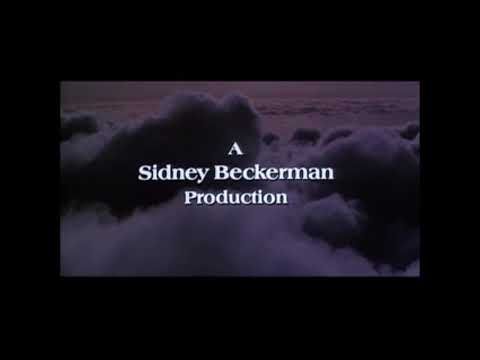Something you often hear about Very Serious Cinema is that “people will be talking about this film for a long time.” It will “change the conversation,” “stay with you,” etc.
Obviously, sometimes this is true. But the dirty secret of cinema is that the movies with the most lasting impact among audiences tend to be precisely the ones the critics like to ignore. Forget Citizen Kane or Through a Glass Darkly, just look at the Best Picture winners over the last quarter-century. American Beauty? The Artist? Birdman? Who talks about those movies or quotes them in normal conversation? When they come out, we’re told these films will be long-remembered for their commentary on society. And a few years later, we’re like, “What was Birdman about again?” Or, “The Artist? Never heard of it.”
Meanwhile, among (mostly male) members of my generation, I can have whole conversations in which most of the idiomatic phrases are culled from Animal House, Caddyshack, Fletch, and Meatballs. I’m not arguing that Caddyshack is a better movie than, say, Network or A Face in the Crowd (two important films I love), I’m just noting that sometimes the most culturally influential movies, the ones that really do have a lasting impact, aren’t the ones that we’re told will have a “lasting impact.”
Which brings me to Red Dawn. I loved—and continue to love—Red Dawn. And while I’m fully aware of some alleged flaws—allegations you are only allowed to mention in my presence if you preface them with “I love Red Dawn, but…” or “Red Dawn is awesome, but…” Once you pay that rhetorical toll, I might indulge what follows the “but…”
Normally, my favorite part of an apocalyptic movie is the few minutes of setup before everything goes to hell. I like the meetings in the White House about how to deal with the incoming asteroid more than the asteroid fighting. I’m far more fascinated by the initial reactions and preparations to the rise of the zombies than all the head smashing and flesh-eating. But not so with Red Dawn. They take care of all of that in the opening credits:
When the movie starts, we get a minute of chit chat, an ominous classroom introduction to Ghengis Khan, and then boom, it’s go time.
Yeah, yeah, I love it in part because I was a teenager when I first saw it. But that’s part of the point. I saw it for the first time—and there have been so many repeated viewings—38 years ago. And I suspect that rarely has a month gone by where I haven’t made reference to it in some way. Part of it is because I live in D.C. and, particularly since 9/11, conversations about how to get out of town, fast, and where to go are pretty common. So saying, “In a Red Dawn situation we’d have to do X or avoid Y” isn’t as strange as it might sound. And just to be clear, the conversation isn’t, “How do we get to Canada?” It’s, “Where can we go where there are guns and a defensible compound?” David French has offered a good spot. But ultimately, the plan is to get to my wife’s family in Alaska, where we could hold out like the Wolverines in the hills for a very, very long time.
Of course, politics enters into it. I was just getting into conservatism back then and the movie was a thumb in the eye of everything I disliked that was making me conservative. The Soviets were unalloyed bad guys. Americans were good guys—except for the collaborators. There was no way to make excuses for the Soviets as all the liberals I knew were always doing. They attacked us. Such moral clarity is how I was taught to see the Cold War, so there was no way I’d abandon it in a hypothetical hot war.
Indeed, liberals hated the movie, which made my youthful, tribal brain love it more. As John Miller chronicled in a piece for National Review timed to the “remake” that shall not be discussed:
“Better dead than Red Dawn,” sneered the Washington Post’s Rita Kempley, who called the film “sick and silly.” Janet Maslin of the New York Times labeled it “rabidly inflammatory,” “incorrigibly gung-ho,” and “a virulently alarmist fable.” Bob Thomas of the Associated Press condemned its “bathos” as “unrelenting.” Perhaps these were the honest assessments of dispassionate reviewers. Even the most fervent fans of Red Dawn would hesitate to claim that it belongs on the American Film institute’s list of greatest movies. Yet it was impossible not to detect the media’s biases at work: The makers of Red Dawn, complained Kevin Thomas of the Los Angeles Times, “spent too much time playing to the rabid anticommies.” You know: The movie must be awful because those icky conservatives approve of it. Even today, many liberals resort to knee-jerk denunciations: “Its guiding ideology is actually fascism,” wrote David Plotz of Slate in 2008.
Plotz is an old friend of mine, but he couldn’t be more wrong. Sure, Red Dawn is simplistic, but that’s not a bug, it’s a feature. Americans heroically defend their land from an invading evil empire. What’s not to love?
I don’t want to go too far down the fascism rabbit hole, but the idea that military struggle and patriotic heroism are inherently fascistic gets the causality entirely backward. Military struggle and patriotic heroism have been celebrated by every culture, under every political system, since the first city states—that’s why fascists exploited it. If the Wolverines in Red Dawn are fascists, then so are the Ukrainians fighting off the Russians.
And that’s something to keep in mind. The Ukrainians are the heroes here. They’re also the victims. But what makes them the heroes is that they are not content to simply be victims.







Please note that we at The Dispatch hold ourselves, our work, and our commenters to a higher standard than other places on the internet. We welcome comments that foster genuine debate or discussion—including comments critical of us or our work—but responses that include ad hominem attacks on fellow Dispatch members or are intended to stoke fear and anger may be moderated.
You are currently using a limited time guest pass and do not have access to commenting. Consider subscribing to join the conversation.
With your membership, you only have the ability to comment on The Morning Dispatch articles. Consider upgrading to join the conversation everywhere.